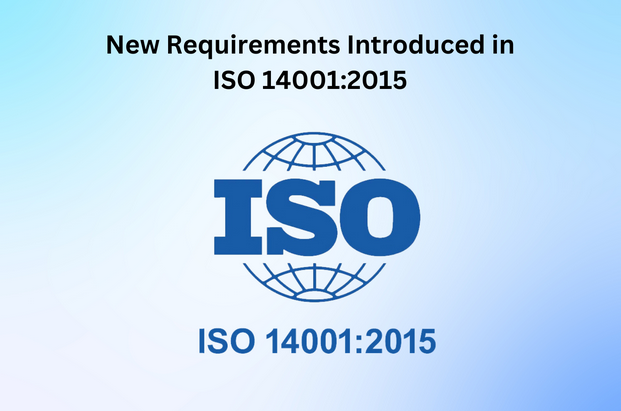International Organisation for Standardisation (ISO) standards for environmental control structures (EMS) have continuously advanced in response to the growing significance of sustainable practices within business. Environmental standards gradually grew with the transition from the ISO 14001 model in 2004 to 2015. ISO 14001 Courses help professionals to work efficiently in organisations and align with environmental management rules and regulations.
This blog will compare ISO 14001 Version 2004 vs 2015 by introducing the importance of the upgrades made to ISO 14001:2015 and how these modifications help companies drive environmental excellence.
Table Of Contents
- New Requirements in ISO 14001:2015
- Benefits of Adapting to ISO 14001:2015
- Conclusion
New Requirements in ISO 14001:2015
Context of the Organisation (Clause 4)
ISO 14001:2015 highlights the importance of understanding the company’s overall context. The initial step is to select elements that may affect the organisation’s capability to fulfil its environmental objectives. This requirement promotes a strategic method of environmental management based on the business operating environment.
Leadership and Commitment (Clause 5)
The 2015 version emphasises that senior management should spearhead the enterprise’s green efforts. It demands that top control take a more excellent palms-on technique to foster an eco-friendly organisational way of life, coordinating environmental projects with different operational approaches and pledging constantly to do higher.
Risk-Based Thinking (Clause 6)
The creation of risk-based wondering is a significant exchange in ISO 14001:2015. Now, more than ever, corporations must take stock of the opportunities and threats their environmental elements pose. This proactive method pushes establishments to address capacity issues before they emerge as foremost in creating an environmental control tool that is both resilient and adaptable.
Life Cycle Perspective (Clause 8)
ISO 14001:2015 (Clause 8) gives an overall life cycle perspective for environmental management. Companies must consider the complete product life cycle, from extracting raw materials to disposing of used parts. This perspective promotes sustainable practices through the value chain by encouraging a thorough evaluation of environmental implications.
Communication and Documentation (Clause 7)
The 2015 edition focuses more on communication, while documentation is still essential (Clause 7). The organisation is responsible for identifying the internal and external communications pertinent to the EMS and documenting, controlling, and transmitting this information efficiently to the appropriate parties.
Performance Evaluation (Clause 9)
ISO 14001:2015 offers a new and Improved Method for Evaluating Performance where businesses should set desires, track their development, and check how well their EMS works. This requirement emphasises a technique for environmental control, enabling informed choice-making.
Continual Improvement (Clause 10)
While continuous improvement is still crucial, the 2015 version requires companies to improve more systematically. Organisations can improve their environmental performance, set new goals, and identify approaches to enhance their performance via joint evaluations.
Benefits of Adapting to ISO 14001:2015
Enhanced Integration
Thanks to the alignment with Annex SL, other management structures, such as ISO 9001 (Quality Management) and ISO 45001 (Occupational Health and Safety), may be included without difficulty. This integration improves the organisation’s standard efficiency by streamlining operations and decreasing duplication.
Strategic Environmental Management
Organisations are encouraged to view environmental management strategically according to ISO 14001:2015. Business ecological strategies can be more holistic and future-proof if they consider the organisation’s context, hazards, and life cycle viewpoint.
Greater Leadership Involvement
The elevated focus on leadership and dedication guarantees senior management fervently supports environmental programmes, leading to greater leadership involvement. As a result of everyone’s efforts, the company has become more environmentally conscious.
Proactive Risk Management
By incorporating risk-based thinking, organisations can proactively identify and handle potential environmental issues, leading to proactive risk management. This approach reduces environmental incidents and increases overall resilience.
Improved Communication and Transparency
The emphasis on documentation and communication guarantees that crucial records are conveyed internally and externally, enhancing transparency and conversation. The enterprise shows that it cares about its surroundings and builds agreement with its stakeholders by being open and honest.
Compliance and Legal Alignment
Businesses should comply with ISO 14001:2015 to ensure compliance with all environmental control-related legal guidelines. This will ensure that the organisation uses all environmental legal guidelines, regardless of how they are exchanged.
Conclusion
There has been a considerable change in the environmental control standards between ISO 14001:2004 and ISO 14001:2015. Through its focus on strategy alignment, risk management, and a detailed approach to sustainability, ISO 14001:2015 simplifies complex environmental landscapes. For more information visit: The Knowledge Academy.

